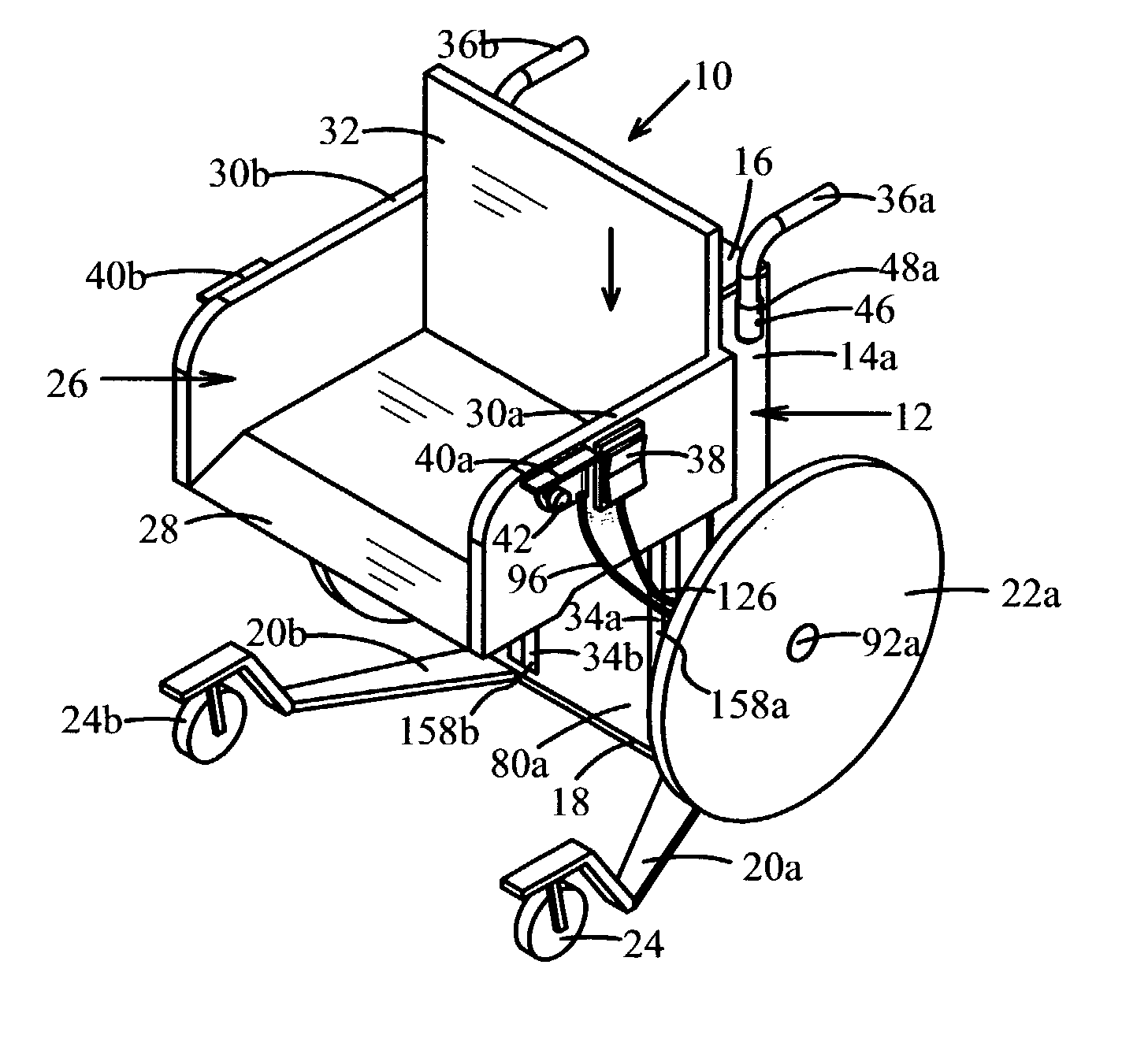Mobile self-recovery chair
a self-recovery and chair technology, applied in the field of mobile self-recovery chairs, can solve the problems of many falls which an individual cannot get up, reduce the overall quality of life of couples, and lose the feeling of legs
- Summary
- Abstract
- Description
- Claims
- Application Information
AI Technical Summary
Problems solved by technology
Method used
Image
Examples
Embodiment Construction
[0132] Referring primarily to FIG. 9, FIG. 10, FIG. 11, and FIG. 12, an alternative lift means comprised of, a gear motor 44, drive screw 50, drive nut 90 and drive nut receiver 74, as previously described, utilizing a pair of horizontal struts 154ab and a single strut 154c substantially connected to a plurality of bearing housings 132abcd that retain rod bearings 130abcd. A pair of stabilizer bearing rods 128a and 128b, not shown, mount in stabilizer rod receiver 148ab and 148cd, not shown. Mounted in the top cross member 16 and bottom cross member 18 the stabilizer bearing rods 128ab insert into rod bearings 130abcd which are retained in bearing housings 132abcd allowing motion up and down while keeping the seat 160 parallel to the ground. The drive screw 50 passes through a hole in the horizontal strut 152c. Projecting forward from each bearing housing 132abcd, a secondary horizontal strut 134abed substantially connects with a vertical strut 136ab as seen in FIG. 10, FIG. 11, and...
PUM
 Login to View More
Login to View More Abstract
Description
Claims
Application Information
 Login to View More
Login to View More - R&D
- Intellectual Property
- Life Sciences
- Materials
- Tech Scout
- Unparalleled Data Quality
- Higher Quality Content
- 60% Fewer Hallucinations
Browse by: Latest US Patents, China's latest patents, Technical Efficacy Thesaurus, Application Domain, Technology Topic, Popular Technical Reports.
© 2025 PatSnap. All rights reserved.Legal|Privacy policy|Modern Slavery Act Transparency Statement|Sitemap|About US| Contact US: help@patsnap.com



